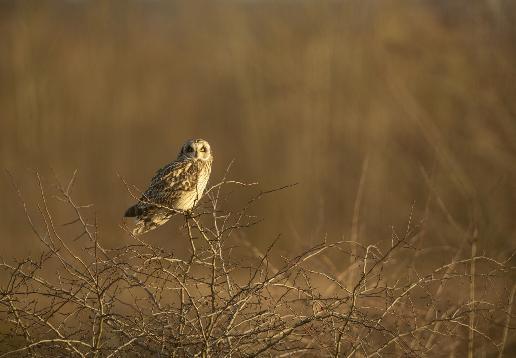
3 minute read
Pancake Day!
Can you help Jamal get to the centre of the maze so he has lemon for his pancakes?
Can you find all the ingredients for perfect pancakes in our letter grid?
Advertisement

The largest pancake ever made was created in the UK in Rochdale, in 1994. It was 15 metres wide and weighed three tonnes.
You would need strong arms to flip that one!
flour frying pan honey lemon milk pancakes salt sugar

By Rob Yarham, RSPB Pagham & Medmerry
eared owls head further south, and it’s at these times that they become easier to see in some years you may find two, three or even four or more short-eared owls flying around the same field or marsh.
excitement. Even the most hardened, experienced birdwatchers will always stop to enjoy watching an owl. Perhaps it’s because these beautiful birds of prey are usually fairly hard to see – many, but not all, owls are nocturnal, of course. Tawny owls are quite common but because they only venture out to hunt in the evening and night-time, we tend to hear their famous calls (the female’s ‘kee-wick’ and the male’s ‘hoo-oo’) more than we see the birds making them. Little owls hunt during the day but they are becoming rarer and barn owls mostly only hunt in daylight, usually in the afternoon and evening during the summer months, when they’re feeding young.
Our fascination with owls is reflected throughout our culture – in folklore, mythology and literature. Their nighttime habits, sometimes ghostly appearance and blood-curdling calls meant that the poor birds were often associated with death and doom. Such ancient superstitions led to the birds’ persecution until relatively recently, but intensive farming and the tidying and development of their favoured hunting, nesting and roosting sites have done further harm to the populations of many owl species since then. But the cold months of winter have their compensations. It’s during this time of year that the short days and cold temperatures can make it easier to see the ghostly, pale forms of a barn owl or a wintering short-eared owl.
Short-eared owls hunt during the day but they don’t breed in Sussex so we don’t get many chances to see this wonderful bird. They spend the spring and summer on the moorlands and rough grasslands of northern Britain, Scandinavia and Russia and migrate south for the winter. However, in especially cold winters more www.rspb.org.uk/paghamharbour
The short-eared owl is mottled, dirty-brown above and pale below and flies low over the ground, flapping its long, stiff wings as it hunts for voles and other small mammals. Occasionally, the owls will perch on fence posts and stare back at you, as if in surprise, with their large, round yellow eyes surrounded by heavy black ‘make-up’. You might be able to spot the two small, feathery tufts on top of its head which give the species its name but these aren’t the bird’s ears. All owls (and harriers) have twin ‘facial discs’, which give them their large, round faces, and these discs channel any sound into their ear cavities – rather like large Victorian conical hearing aids – which are positioned just to the sides of their eyes, so they can hear the faint rustle of prey moving in the grass below.
The shorter, colder days of winter also mean that the local barn owls may extend their hunting sessions into the daylight hours. Mid- to late afternoons are a good time to look for them on cold days as they hunt over farmland and grassland. They’re about the same size as the shorteared owl but they appear whiter, with honeybrown above, and they have shorter, broader and more rounded wings. You’ll often see the barn owl floating through the air as it hunts, with slow, butterfly-like, buoyant flaps and then it will suddenly turn and drop down into the grass when it finds prey.
But while barn owls will stay into the spring, the short-eared owls will soon be heading back north again to their breeding grounds in northern Britain and Europe. So this month is the perfect time to head out to one of our reserves to see if you can spot one of these beautiful, ghostly birds while you still can.

Join us on one of our guided walks this month to see if we can find some owls and other winter visitors, including birds of prey, waders and wildfowl, before they leave in the spring: https:// events.rspb.org.uk/paghamharbour or call 01243 641508.







